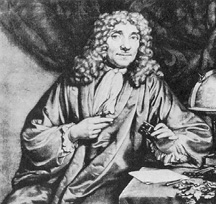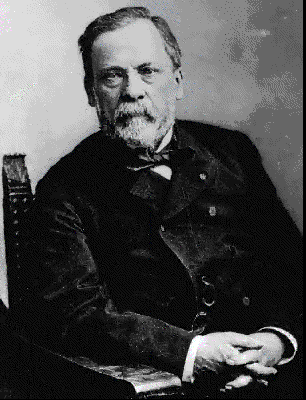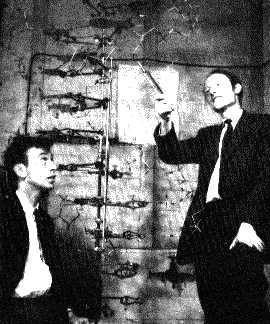Aristotle and the Foundation of Biological Science
 Born to the son of the physician to Philip II, King of Macedon, Aristotle was 17 years old when he became a pupil of Plato (427-347 BC), and Plato had been a pupil of Socrates (470-399 BC). All three were Greek philosophers. Philosophy is the study of the nature and limits of human knowledge. It is concerned with the principles underlying all forms of understanding.
Born to the son of the physician to Philip II, King of Macedon, Aristotle was 17 years old when he became a pupil of Plato (427-347 BC), and Plato had been a pupil of Socrates (470-399 BC). All three were Greek philosophers. Philosophy is the study of the nature and limits of human knowledge. It is concerned with the principles underlying all forms of understanding.
Early science and philosophy were tightly bound together because both philosophy and science are attempts to understand the world by a disciplined use of reason.
Leeuwenhoek and the Power of the Single Lens
 Anton van Leeuwenhoek (1632-1723) was a Dutch linen-draper with no formal education in science. With very simple equipment he mad many important discoveries of structures too small to be seen with the naked eye. He also made observations on the functioning of living things. His studies of the structures of flowing plants made him a founder of plant anatomy.
Anton van Leeuwenhoek (1632-1723) was a Dutch linen-draper with no formal education in science. With very simple equipment he mad many important discoveries of structures too small to be seen with the naked eye. He also made observations on the functioning of living things. His studies of the structures of flowing plants made him a founder of plant anatomy.
Darwin and the Theory of Evolution by Natural Selection
 Charles Darwin born in 1805, laid the foundation for a revolution in biology. A careful observer and a fine naturalist, his published works shared his desire to read general theories in biology, combined with caution. At 22, he became resident naturalist on board the HMS Beagle, he accumulated geological and fossil evidence that supported the idea that life changes with time. He also studied the flora and fauna of mainland South America and of some surrounding islands, including the Galapagos Islands.
Charles Darwin born in 1805, laid the foundation for a revolution in biology. A careful observer and a fine naturalist, his published works shared his desire to read general theories in biology, combined with caution. At 22, he became resident naturalist on board the HMS Beagle, he accumulated geological and fossil evidence that supported the idea that life changes with time. He also studied the flora and fauna of mainland South America and of some surrounding islands, including the Galapagos Islands.
Darwin's published works included studies of the effects of light on plant growth, climbing and insectivorous plants, earthworms and soils, orchids, insects and plants of various habitats, aspects of geology and emotion in humans and animals.
 Louis Pasteur (1822-95) born in eastern France, the son of a tannery worker. Pasteur founded sterochemistry and showed that microorganisms might only metabolise only one of a pair of optical isomers. His studies of industrial fermentation led him to establish the importance of air-borne microorganisms and their spore, and to the discovery that fermentation is a form of respiration.
Louis Pasteur (1822-95) born in eastern France, the son of a tannery worker. Pasteur founded sterochemistry and showed that microorganisms might only metabolise only one of a pair of optical isomers. His studies of industrial fermentation led him to establish the importance of air-borne microorganisms and their spore, and to the discovery that fermentation is a form of respiration.
Crick & Watson and the Foundation of Molecular Biology
 Francis Crick, born in 1916, and James Watson, born in 1928, produced a chemical model of the DNA. This was of two separator chains, wound around each other (double helix). The backbone of the chains was formed by sugar phosphate residues. Organic bases attached to the sugars are directed inwards and held by hydrogen bonds.
Francis Crick, born in 1916, and James Watson, born in 1928, produced a chemical model of the DNA. This was of two separator chains, wound around each other (double helix). The backbone of the chains was formed by sugar phosphate residues. Organic bases attached to the sugars are directed inwards and held by hydrogen bonds.